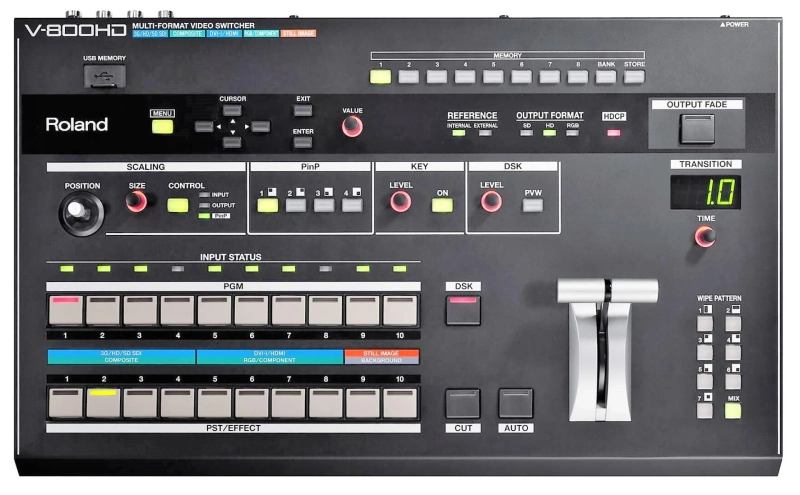Audio-visual (AV) technology is responsible for the success of any event, be it corporate, live concerts or trade fairs. Even well-planned occasions can be sabotaged by glitches that disrupt presentations, slow down audience interaction and make a poor impression. Inadequate sound dispersion, technical hitches and an imbalance of lighting are some of the most common errors that event managers face. Awareness of pitfalls and troubleshooting capabilities can make a huge difference in providing a flawless experience.
1. Poor sound distribution
Poor sound distribution is perhaps the most common AV issue at events, providing an uneven sound experience for the audience. Some sections of the venue are too loud, while others are too soft, barely able to hear the presenter or the performance. The problem usually occurs because speakers are wrongly installed, audio balances are not done correctly, or the venue's acoustics are not taken into account.
How to avoid it
To provide even sound coverage, begin by conducting a sound check of the venue prior to the event. Large events require multiple zones for speakers or strategically positioned line array systems to provide even coverage. Delay speakers in more distant sections provide audio clarity without the overblown volume from the main source.
It is also necessary to engage skilled sound engineers who can modify equalisation (EQ) settings and balance mic levels to avoid distortions or volume irregularities. Investing in wireless microphones and lapel mics for the speakers can also enhance the sound clarity while avoiding the risk of feedback.
2. Equipment Malfunctions
Technical failures are one of the biggest concerns for large event organisers. Microphone malfunctions, video playback issues, projector failures or complete system crashes can sabotage a presentation and cause frustrating delays. These issues typically stem from incompatible hardware, wrong connections, or neglecting to test equipment beforehand.
How to prevent it
Prevention starts with comprehensive checks before the event. Always test all speakers, microphones, projectors, and screens at least a day in advance of the event to identify potential issues. Ensure all AV hardware is compatible with presentation content and connected devices, as well as that backup cables, batteries and adapters are handy.
For live events, having a redundancy plan, such as spare laptops, backup projectors and a backup audio setup, is essential. Professional AV technicians should be available during the event to resolve issues in real time.
3. Lighting imbalances and poor visual experience
Lighting can either make or break an event's ambience, stage presence and audience experience. A common mistake is applying too much or too little lighting, which can result in glare, dark shadows or a dull stage. Another prevalent issue is poor synchronisation between lighting and other AV elements, which creates distractions rather than enriching the experience.
How to enhance it
Sufficient stage lighting design should balance brightness, colour temperature, and location. Key areas like the speaker podium, stage backdrop, and audience seating should be well-lit without inducing glare or discomfort. Use spotlights, LED panels, and stage washes to create a visually engaging environment.
For video presentations or live streaming events, steer clear of harsh backlighting, which silhouettes speakers. Instead, employ front lighting that accentuates presenters while maintaining sharp and clear background graphics. Advanced controls enable colour coordination and smooth transitions to match the event theme.
4. Presentation display issues
Low-resolution projectors, misaligned screens and unfocused images are frequent problems that can dilute an event's impact. Technical issues like pixelation, lagging video feeds, or incompatibility between display units and presentation files can deter audience participation.
How to improve it
Selecting the correct display technology based on venue size and audience distance is critical. For large venues, LED video walls or high-lumen projectors provide bright and clear images. Test all videos and slideshows on the actual screen prior to the event to ensure correct resolution and aspect ratio alignment.
It's also recommended to save presentation backups on several USB drives or cloud storage to avoid file corruption problems. Employing a wired connection for streaming or presentation delivery minimises Wi-Fi interference that can cause video lag.
5. Not rehearsing before the event
One of the most frequent mistakes event organisers commit is not testing AV equipment and rehearsing prior to the event. Even with high-quality equipment, improper setup, untested connections and last-minute adjustments can cause massive disruptions.
How to get a glitch-free setup
A complete AV test run should be conducted well in advance of the event start, including all equipment, microphone levels, lighting levels, and display settings. Conduct a full-dress rehearsal involving speakers, performers, and technical staff to spot potential issues and make the necessary adjustments accordingly.
Testing should also include on-site Wi-Fi and live-streaming connections to prevent bandwidth issues for virtual attendees. Working with an experienced AV team ensures seamless delivery and allows organisers to focus on content delivery rather than technical problems.
6. Not engaging professional support
Most companies try to manage AV needs in-house or use venue-provided equipment without technical support. This typically leads to last-minute problems, ineffective troubleshooting, and a subpar overall experience.
Why AV support is necessary
Employing an experienced AV team ensures that every aspect of the audio-visual installation is optimised for the specific needs of the event. Professionals manage equipment installation, real-time monitoring, and technical troubleshooting, allowing presenters and event organisers to focus on engagement rather than technical problems.
Professional audio visual hire services provide access to state-of-the-art equipment, tailored solutions and expert advice to ensure smooth delivery. Investing in this support ultimately creates event success and helps avoid costly errors. When planning a corporate event, trade show or live production, companies must invest in quality AV solutions to make a lasting impression. For those who need audio visual installation in Perth, working with experts in the field ensures correct installation, enhanced sound clarity and immersive graphics for a flawless event experience.



